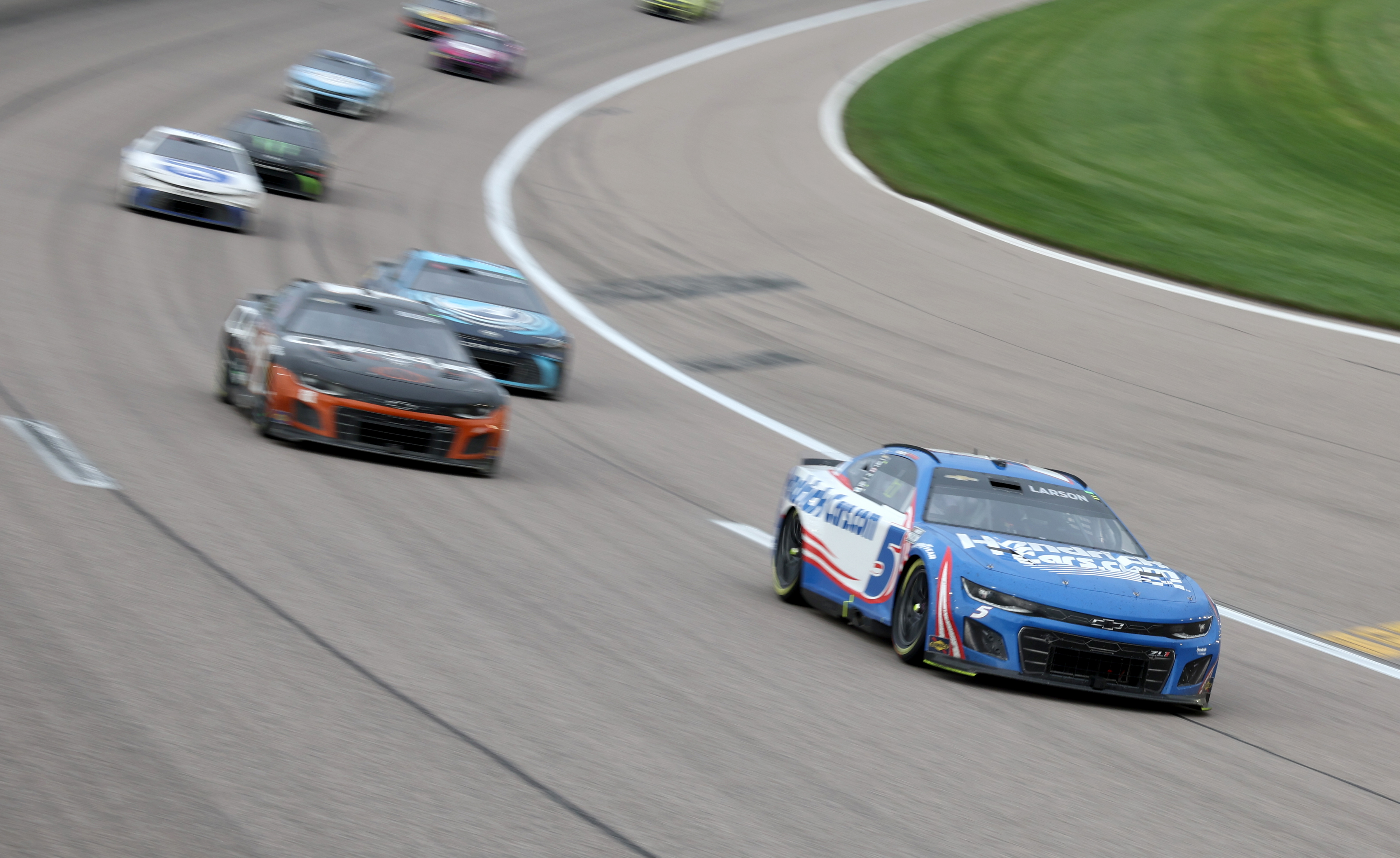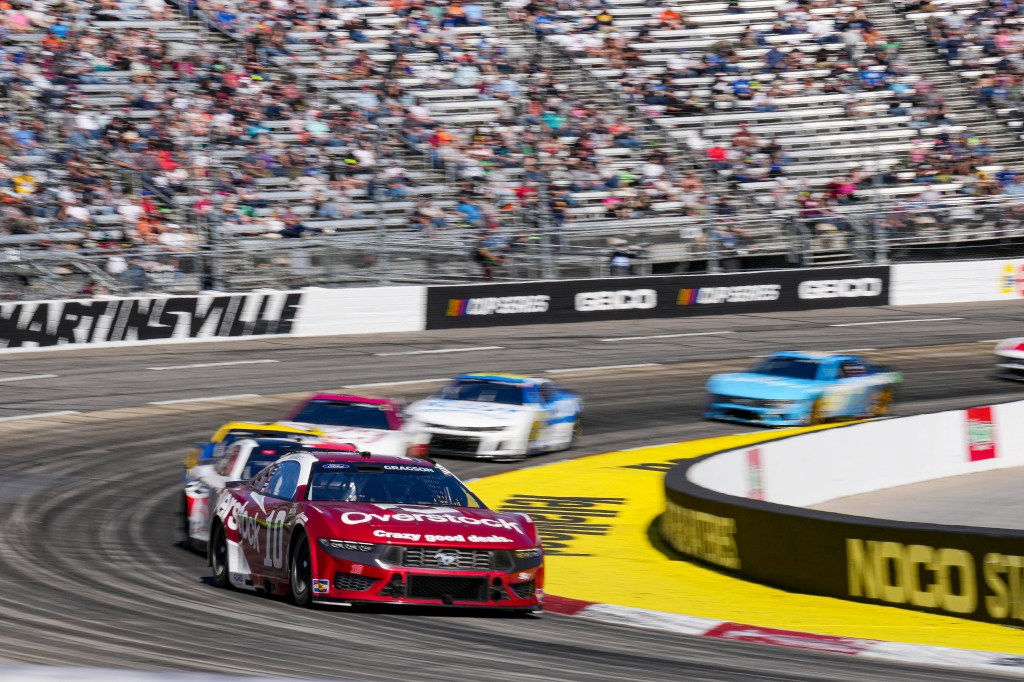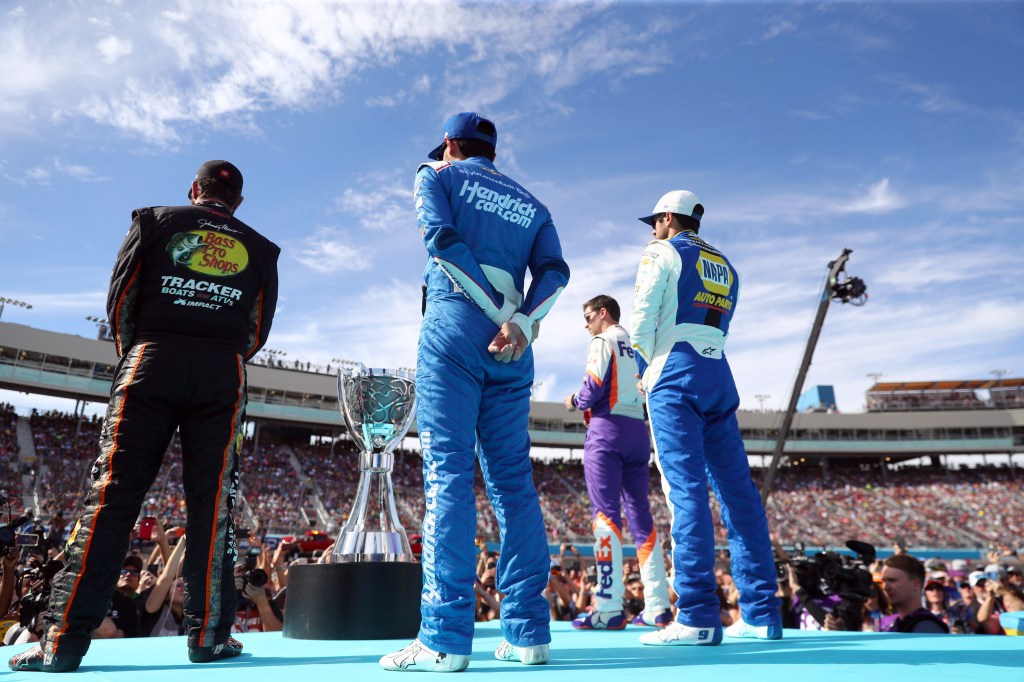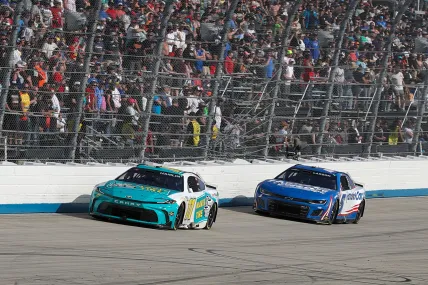
The AdventHealth 400 had it all, didn’t it?
Listen, the closest finish in NASCAR Cup Series history is going to steal the headlines but that was a tremendous race from start-to-finish with the results of overtime just the figurative icing on top of an otherwise delicious cake.
For one, the first stage on Sunday night after the rain delay at Kansas Speedway might have been the collective best segment of racing at NASCAR’s highest level in over a decade. Everyone settled down for the second stage but then the third stage really had everything else from the series of cautions that triggered a potential fuel mileage race negated by a late caution and the green-white-checkered.
So let’s celebrate this one.
Celebrate this one because we’ve collectively been exasperated over the past two months debating the flaws of the seventh-generation car on short tracks and superspeedways to the point that we need banger races like Bristol and now Kansas to snap us out of it.
That was awesome and reminded all of us why we’re into cars going around in circles in the first place.
… give us more intermediates?

It remains so very fascinating how this car has completely flipped the script on NASCAR’s on-track product.
For the better part of a decade-plus, the Cup Series was perceived as having too many intermediate tracks, its historic bread and butter discipline. That’s how we ended up doubling the number of road course races, by the way.
So now, almost by accident, the Cup Series ended up taking a car that was designed to be a draggy pack racing car and absolutely thriving with it on wide intermediates like Kansas and Charlotte Motor Speedway, once the decision was made to up the horsepower and lower the downforce.
They called Bristol a happy little accident in March but there was no happier accident than what happened to 1.5-mile tracks with this car.
“The leader is typically at a disadvantage I feel like on these (intermediates) because it seems as though you abuse your right rear tire more, so it’s hard to get away,” Larson said. “You’ve got the draft plus you’re abusing your tires more.
“So, it just keeps the field bunched up. I think with the old car, we’d probably get out to like an eight-second lead here. The couple-second lead that I got in the second stage was as big as you’d probably see in the Next Gen era on an (intermediate).
“It’s always been good, though. Even with the other car it was always a good track. I think a lot of it has to do with the progressive banking and how that kind of affects the handling of the car.”
Larson immediately climbed out of the car and demanded more intermediate tracks to be added to the schedule and he’s right.
For one, NASCAR’s championship race experiment at Phoenix Raceway has to end this year, and by all accounts it is well on its way to ending after 2024. The obvious answer for the championship race is a return to Homestead-Miami Speedway, which is great with this car for the same reasons Kansas is.
It has progressive banking on an old surface, and even better than Kansas is the symmetrical straightaways to allow for the drafting this car does so very well.
Eventually, NASCAR will take its street course race concept to other markets and hopefully Chicagoland Speedway is still right there for the using and Speedway Motorsports can always return to Kentucky Speedway someday once its tenure at Circuit of the Americas runs its course.
The Charlotte Motor Speedway ROVAL was such a savvy decision for its time but that time has passed. It’s time for the return of the Bank of America 400 to the oval given how great recent Coca-Cola 600s have been too.
“This track is awesome,” Larson said. “Mile-and-a-halfs are awesome. Give us more mile-and-a-halfs.”
Still, fix the short tracks

This is going to require some finesse and nuance from some of you but hang tight.
In the immediate aftermath of the finish, the new closest in the history of the Cup Series by the way, there was an upswell in sentiment from a subsection of the fanbase that criticized the discourse from the past week about air blocking or the race quality from these cars.
Two things can be true, that this car excels on intermediates, but its aerodynamic qualities do not lend itself to quality short track races. What happened on Sunday at Kansas doesn’t render moot what happened at Dover or what has continually happened at Martinsville, Wilkesboro and Richmond.
And the solution cannot be to simply bury short tracks with intermediates again, which was the game plan in the 90s and 2000s.
Maybe the option tire experiment in two weeks at freshly repaved North Wilkesboro will bear fruit and replicating on a scale what happened at Bristol will be the solution moving forward.
It’s more likely than not, and the industry will be loathe to accept this, that the NextGen will simply need an intermediate spec and a short track spec … which is frankly no different than Indy cars having a oval and road course spec.

Be it the contact patch of the tires and its corresponding wheels, or the sealed underbody, or the horsepower levels, more than a spoiler and simplified rear diffuser is needed to repair the racing product on short tracks. Short tracks just need a fundamentally different spec of NextGen than what is raced on intermediates and it becomes clearer everyday.
Again, celebrate this race and this kind of racing but please don’t give up on short tracks as a result of a weekend like this one.
Hendrick v Gibbs

Ford Performance was right there.
One of their teams had it.
Until they didn’t.
189 days.
That’s how long it has been since Ford has won a Cup race. That’s the 12 races to start this season plus the championship last year that Ross Chastain in a Chevrolet won despite Ryan Blaney closing out on the championship.
Ford once went 21 races in 2010 before winning a race with Greg Biffle (Roush) at Pocono so there is still plenty of runway before reaching that marker.
“It’s definitely not from a lack of effort,” Blaney said over the weekend. “We’re working hard every day to try to figure out where we need to be at. We’re inching in on it. I feel like we’re getting closer to where we were to start the year but it’s a matter of just getting there.”
Nevertheless, it remains very obvious that this a Hendrick Motorsports versus Joe Gibbs Racing kind of season so far with the two flagship organizations from Chevrolet and Toyota accounting for 10 wins in 12 races.
Toyota’s new Camry XSE body has immediately worked out for them while Ford’s new Mustang Dark Horse has not.
But again, and this has been the narrative all along, that these are the months to figure it out because the season doesn’t truly begin, within reason, until September for the playoffs.
And the past two years is proof of that, because both Blaney and Joey Logano were mired in pretty deep regular season slumps but caught momentum over the final 10 races and closed out in the races that mattered the most.
“It’s a long season,” Logano said. “The name of the game is you have to get yourself into the playoffs and then you have to peak in them. We have to make sure we’re alive long enough to when we do get speed in our stuff, we’re ready to capitalize and have something to race for.”
But for now, it’s Hendrick v Gibbs in the NASCAR Cup Series.
Matt Weaver is a Motorsports Insider for Sportsnaut. Follow him on Twitter.




